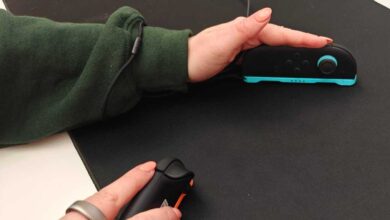A surprising number of medieval scribes were women

During the Middle Ages, the process of creating a book was a laborious project that involved meticulous handwork. It is estimated that between 400-1500 CE, over 10 million manuscripts were produced by medieval scribes, with only around 750,000 of them still in existence today. These manuscripts were meticulously copied, illustrated, and bound by hand, often by monks in monastery scriptoriums spending hours at a time bent over desks. However, a recent study conducted by researchers from the University of Bergen in Norway has shed light on a surprising discovery – that a significant number of these manuscripts were actually penned by women.
The study, published in Humanities and Social Sciences Communications, delved into the gender dynamics of manuscript production during the medieval period. While previous studies had explored gender roles in monastic scriptoria, this research sought to quantify the number of women who contributed to this demanding task. The researchers focused on a common section found in most medieval manuscripts called a colophon, which often contained details about the scribe, including their name, the commissioning party, the date of production, and sometimes a personal reflection statement.
By analyzing a catalog of Benedictine colophons, the researchers identified a total of 254 entries linked to female scribes, with 204 of them featuring the names of the women themselves. This revelation accounts for approximately 1.1 percent of the Benedictine database’s books, suggesting that at least 110,000 manuscripts were copied by female scribes, with an estimated 8,000 still in existence today.
However, the researchers acknowledged that their estimate may be conservative, as many women may have omitted their gender or name in colophons, and varying manuscript survival rates across regions could have skewed the data. The study also hinted at the possibility of undiscovered female book-producing communities that were not documented in existing records.
The findings of this study challenge the traditional narrative of medieval manuscript production as a predominantly male-dominated activity. The presence of female scribes highlights the diverse and often overlooked contributions of women to the cultural and intellectual landscape of the Middle Ages. This research serves as a starting point for further exploration and recognition of the role of women in shaping the medieval literary heritage. The world of technology is constantly evolving, and with each new advancement comes a host of possibilities for how we interact with the world around us. From AI to VR, the future of technology is shaping up to be an exciting and innovative one.
One area of technology that has seen significant growth in recent years is artificial intelligence (AI). AI is a branch of computer science that aims to create machines that can perform tasks that typically require human intelligence, such as speech recognition, decision-making, and problem-solving. AI has already been integrated into various aspects of our daily lives, from virtual assistants like Siri and Alexa to recommendation algorithms on streaming services like Netflix.
Another area of technology that is rapidly advancing is virtual reality (VR). VR technology allows users to immerse themselves in a digital environment, often using a headset or goggles. This technology has applications in a wide range of industries, from entertainment and gaming to healthcare and education. VR can be used to create realistic simulations for training purposes, or to provide immersive experiences for entertainment purposes.
One of the most exciting developments in technology is the rise of autonomous vehicles. Autonomous vehicles, or self-driving cars, use a combination of sensors, cameras, and artificial intelligence to navigate the roads without human intervention. Companies like Tesla, Google, and Uber are all investing heavily in this technology, with the goal of making transportation safer and more efficient.
Blockchain technology is another area of technology that is gaining traction. Blockchain is a decentralized, distributed ledger that records transactions across multiple computers. This technology is most commonly associated with cryptocurrencies like Bitcoin, but it has applications beyond just digital currencies. Blockchain can be used to create secure, transparent systems for tracking supply chains, voting, and more.
As technology continues to advance at a rapid pace, it’s important for us to consider the ethical implications of these advancements. Issues like data privacy, job displacement, and bias in AI algorithms are all important considerations as we move forward with new technologies. It’s crucial that we approach these advancements with caution and consideration for the potential impact they may have on society as a whole.
In conclusion, the future of technology is bright and full of possibilities. From AI to VR to blockchain, there are countless opportunities for innovation and growth in the tech industry. As we continue to push the boundaries of what is possible, it’s important that we do so with a focus on ethics and responsibility. Only by approaching technology with a thoughtful and considerate mindset can we ensure that these advancements benefit society as a whole.





